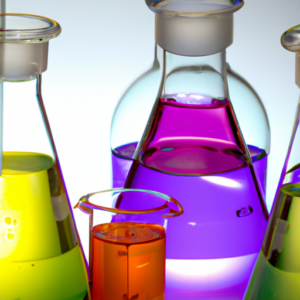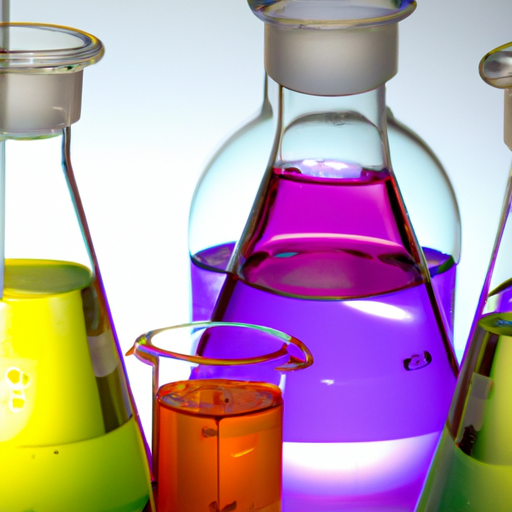What’s the Deal with Chemical Peels?
Hey there, skincare enthusiasts! Have you heard of chemical peels? If not, don’t worry – I’m here to explain it all. Simply put, a chemical peel is a type of skin treatment that uses various chemicals to improve the overall appearance and health of your skin.
You may be wondering, “Why would I want to use chemicals on my face?” Well, there are actually quite a few benefits to getting a chemical peel. For starters, it can rejuvenate your skin by removing dead skin cells and promoting new cell growth. This can lead to improved texture and tone, as well as a reduction in fine lines and wrinkles. Chemical peels can also help correct sun damage, meaning your skin will look more even and radiant than ever before.
Now, let’s talk about the different types of chemical peels. There are generally three categories: light, medium, and deep. Light peels are the gentlest option, and are good for people who are new to chemical peels or have sensitive skin. Medium peels go a bit deeper and can help with things like acne scars and hyperpigmentation. Finally, deep peels are the most intense option and are usually reserved for people with more severe skin concerns.
As with any skincare treatment, there are some risks and precautions to be aware of before getting a chemical peel. Potential side effects include redness, swelling, and peeling – but don’t worry, these are usually temporary. It’s also important to note that certain people may not be good candidates for chemical peels, such as those with eczema or rosacea.

All in all, chemical peels can be a great way to improve the look and feel of your skin, but it’s important to do your research and consult with a skincare professional before diving in.
Benefits of Chemical Peel Treatments
Hey there! If you’re considering a chemical peel treatment, you’re probably wondering about the benefits. Well, let me tell you, chemical peels can work wonders for your skin! Here are some of the benefits:
Firstly, chemical peels can rejuvenate your skin. With age, our skin begins to lose its natural glow and become dull. However, a chemical peel treatment can remove the top layer of dead skin cells, revealing fresh, new skin underneath.
Another benefit of chemical peels is improved texture and tone. If you have uneven skin texture or noticeable pores, a chemical peel can even out your skin and give you a smoother complexion.
Chemical peels are also great for correcting sun damage. Sun damage can contribute to brown spots, wrinkles, and fine lines. A chemical peel can actually help reduce the appearance of sun damage and give you a brighter, more youthful complexion.
Lastly, chemical peels can reduce wrinkles and fine lines. This is especially true for deeper peels, which can penetrate deeper into the skin and stimulate collagen production. In turn, this can reduce the appearance of wrinkles and fine lines.
Overall, chemical peels can provide a wide range of benefits for your skin. If you’re looking to rejuvenate your skin, improve its texture and tone, correct sun damage, or reduce wrinkles and fine lines, then a chemical peel may be just what you need!
Types of Chemical Peels
There are three main types of chemical peels: light, medium, and deep. Light peels are the mildest and most commonly used. They use alpha-hydroxy acids (AHAs) or beta-hydroxy acids (BHAs) to gently exfoliate the skin’s surface. Light peels are best for those with mild skin imperfections and can be done regularly without too much recovery time.
Medium peels are stronger than light peels and use trichloroacetic acid (TCA) to penetrate the skin’s middle layers. Medium peels can help improve texture, tone, and pigmentation irregularities. Recovery time for medium peels can range from 2-7 days, depending on the intensity of the peel.
Deep peels are the strongest and penetrate the deepest layers of the skin. They are usually done using carbolic acid or phenol. Deep peels can help treat severe skin imperfections but usually require the longest recovery time, up to 2 weeks. They also have a higher risk of complications and should only be done by a trained professional.
It’s important to speak with your skincare professional to determine which type of peel is best for your skin’s needs and goals. They can also advise you on post-treatment care and which products to avoid during the healing process.
Risks and Precautions
Hey, it’s important to know that chemical peels are not for everyone. I mean, they can be awesome, but there are some risks involved. For example, some people may experience redness, peeling, or flaking skin after the treatment. These side effects usually go away after a few days, but they can still be uncomfortable or embarrassing while they last.
It’s also important to know that not everyone should get a chemical peel. People with certain skin conditions, like eczema or rosacea, may not be able to tolerate the treatment. You don’t want to make things worse, right? Also, if you’re pregnant or breastfeeding, you should probably hold off on getting a chemical peel until after you’ve given birth and finished nursing your baby.
On top of that, you’ll want to make sure you go to a reputable spa or dermatology office for your chemical peel. If the solution is too strong, it could actually damage your skin. Yikes! So, before you go anywhere, do your research and read some reviews online. You can’t be too careful when it comes to your skin, after all.
In conclusion, a chemical peel can be an amazing way to improve the appearance of your skin. But, it’s important to be aware of the potential risks and precautions associated with the treatment. If you’re still not sure whether a chemical peel is right for you, check out this great article on evaluating the effectiveness of chemical peels for acne scars. It’s always better to be informed before you make any decisions about your skin.
Oh, Chemical Peels – Is It Worth My While?
After digging deep into the world of chemical peels, it’s pretty clear that they offer a multitude of benefits. As someone who’s dealt with acne scars and sun damage, the idea of achieving rejuvenated skin with a simple (albeit not necessarily painless) treatment is incredibly tempting.
Before scheduling an appointment, however, it’s important to take a moment to consider the potential risks associated with chemical peels. While side effects are generally mild, they can still be uncomfortable or even painful. It’s also essential to understand who is not a good candidate for the procedure.
With that said, if you’re someone who’s struggling with dull, textured, or aging skin, chemical peels could be the solution you’ve been searching for. To get the most out of the treatment, consider working with a skincare professional who can help assess your skin and recommend the best type of peel for your needs.
All in all, the benefits of chemical peels outweigh the potential risks. With a little research and preparation, you could be on your way to achieving the luminous, glowing skin you’ve always wanted. So what are you waiting for? Book a consultation with a trusted professional today and start your journey towards a brighter, smoother complexion.
